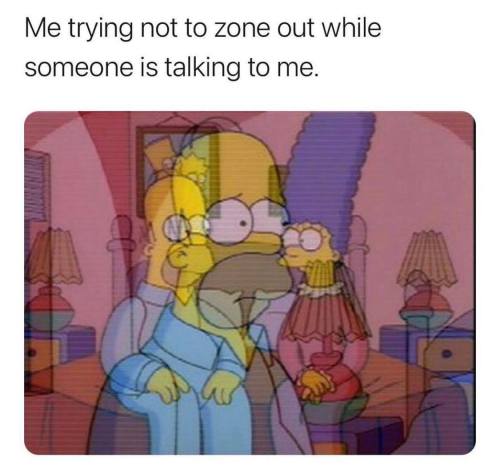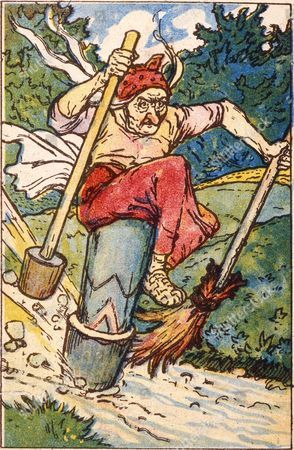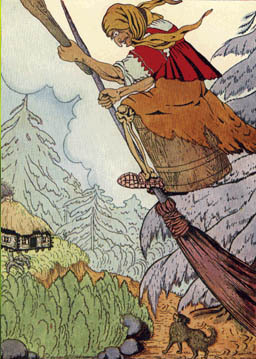Tarot Reading Tips 💖
Tarot Reading Tips 💖
🔮 Learn the classic definitions of the cards - you don’t need to memorize every card’s meaning, I still use my book, but knowing a general meaning of cards will help
🔮 Wands- fire, Cups- water, Swords- air, Pentacles- earth
🔮 Using the elements helps me understand the cards and give them meaning
🔮 You can connect with a card by envisioning it and placing yourself inside of it- Stand in it and think of what you feel, see, smell, hear. I think this is a fun little exercise, though I don’t do it frequently.
🔮 Incorporate lucky numbers, personal habits and preferences into the way you shuffle, pull cards and organize spreads
🔮 I cut the deck and deal cards with my left hand (I’m right handed), but that’s just me
🔮 If you want more information on a card, pull another one and place it on top of the first.
🔮 Don’t pull too many cards or do too many readings- If you overwhelm yourself with information or deal half the deck, the cards tend to lose meaning and you learn very little from the reading.
🔮 Practice on yourself, family and friends- the more you practice the better you’ll know the cards and be able to create a story, which brings me to…
🔮 Connect the cards to make a story- this is how my mom reads cards and it always blew me away how she could just create this little story from a few cards and really give them life. Connecting the cards makes it easier to understand and less like random tid-bits of information.
🔮 Thank your cards when you’re done
🔮 Try meditating before a big reading- this doesn’t have to be classic meditation where you clear your mind, it can be very personal and whatever you feel like connects you to your cards, the person you’re reading and any deity or spirit you might be asking for help.
🔮 You don’t need to call on Gods or spirits while reading. If you’re not into that, don’t mess with it. And if you do practice this, please do it responsibly.
🔮 When I meditate I see vines, water, energy and spirits- I know that when these all come together I’m calm and focused. Your meditation will probably be nothing like mine and that’s perfectly normal.
🔮 Not a tip, but now that I’m thinking about it, is there a name for what I’m doing besides ‘meditating’ because I don’t find that fitting? 🧐
🔮 Never stop learning (exhibit A ⬆️) and don’t be afraid to ask possibly silly questions (see: exhibit A)
More Posts from Star-comet-witches and Others


⚔️ Naturally Lucky 🌿
In love with my new fluorite dice set by @urwizards ~
Things to Research as a Beginner Earth Witch
The history of herbal witchcraft
Trees, Trees, Trees
Edible Wild Plants
Wildflowers ~ harvesting + foraging + drying
Medicinal Plants + Herbs
Mushroom Identification
Teas, Tinctures, Meads + Smoke Blend recipes
Crystals + Gems + Stones
Types of witches
Deities/Archetypal God-desses
Altar building + devotions
Types of magick
Types of energy
Types of spells
Types of divination
Elements + their magick
Moon Phases
Seasonal Magick
Cyclical Nature of Earth
Wheel of the Year
Wheel of Days (celebrations and feasts)
Native Spirituality
Animal Medicine + Animal Totem
Famous Herbal Witches
Astral Travel + Projection
Entheogen
The best antidote to the unknown is to learn as much as you can.
Blessed be,
Rosemary Milk 🌹

Platonic Vampirism

look at this cute incense box i thrifted the other day!!! love it sm




ghibli + nature scenarios (part 2).

18- Baba Yaga

18- Baba Yaga (Slavic Folklore).
This classic witch originates from Russian mythology and Slavic fairytales. Baba Yaga appears in various legends, often occupying the role of the witch residing deep in the woods that the main character must interact and barter with. She is the predecessor to witches like those found in the fairy tales of Charles Perrault, as well as those found in the Grimm Brothers’ works. Baba Yaga retains many unique characterizations and attributes not found in any other witch, however, making her singularly iconic.
Baba Yaga is described as a hideous, deformed, and vicious looking woman, resembling the classic hag archetype. In some versions of her story, Baba Yaga is not one, but three sisters all named Baba Yaga, each sister being older than the next. In this way, Baba Yaga is intimately connected to both The Graeae and the Moirai (#64), and illustrates the triple goddess. More specifically, Baba Yaga is a representation of the Crone phase, and is associated with death, darkness, and winter. Her function in the legends she appears in further matches this archetype, as she “may help or hinder” the characters that beseech her. She stands at the crossroads of death and mystery, allowing some to pass unscathed.
Baba Yaga is best known for two specific attributes that have defined witch iconography and contributed to Baba Yaga’s mythological uniqueness. Her residence, as well as her choice of aerial transportation, are some of the most distinctive out of any witch in this series. While most fairy tale and fictional witches fly through the sky on their iconic brooms, Baba Yaga sits her little old body inside a mortar, and steers her “spice-craft” with a pestle as rudder. The iconography and symbolic nature of this, with the mortar representing the divine feminine/womb and the pestle representing the divine masculine/phallus, shows Baba Yaga to be a character in balance with nature, called by some as a “phallic mother”. Other depictions show Baba Yaga riding through the sky in a cauldron, further solidifying the relationships between witches and their love of these cast iron pots (Ceridwen #56).
Baba Yaga’s hut is similarly iconic and unique, and has influenced centuries of witch-lore. Her house sits upon a pair of chicken legs (sometimes just a single claw). It jumps in the air and spins around, constantly moving from place to place and turning direction. I’ve seen dozens of references and depictions of witch-homes on chicken legs, but they are all imitations of Baba Yaga’s. Her yard is surrounded by a fence impaled with skulls, furthering her placement at the gates of death and dying. Her fowl-legged home appears in the earliest references to Baba Yaga, so whatever this strange attribute means, its intimately connected to her being.
The etymological roots and significance of her name are disputed. It’s generally agreed that the Baba is the same root as babushka, meaning grandmother. Other roots in Old Russian bring the shared meaning of Baba to “midwife, sorceress, and fortune teller”. The Yaga part of her name is less conclusive, however, with no root universally agreed upon. Some believe it has its origin in “serpent, snake”, while others see it from anything from “horror”, “witch”, “evil woman”, and “pain and worry”. In this way, Baba Yaga principally means Grandmother Witch, the Slavic etymological counterpart to the Italian version, Strega Nona (#21). Both Strega Nona and Baba Yaga are examples of the tradition of witch names ending in an A, with Baba Yaga perhaps being the earliest (See: Hilda and Zelda #36, Sabrina #62, Samantha/Endora/Clara #s 89/54/39, Glinda 76, et. al.).
In modern times, Baba Yaga has become more of a bogeyman character, used to scared children into good behavior. She’s described as flying through the air in her cauldron, stealing kids away to eat them. She is often shown as a consort to the personification of Death, sealing her Crone status. This association expands beyond the original source material for her, however, and while she is now often seen as evil, she was more thoroughly understood as being morally ambiguous. Baba Yaga’s ultimate good or evil was brought out by the decisions and/or actions of the main character in the fairy tale who interacted with her, serving as a reminder of caution, thoughtfulness, and sure-footedness.
Baba Yaga remains one of the classic hag witches from world folklore and mythology. I am absolutely enamored with her flying around in a Mortar/Pestle, as I find her to be one of the prototypes for modern Kitchen Witch iconography. Her witch residence goes down in history as one of the most unique, rivaled only by the far removed castles of witch/queens. I find her manifestation as three Baba Yagas, each living in a chicken-clawed home, to be her most allegorical and fascinating. In this way, Baba Yaga illustrates the singularity and unity of the Triple Goddess into one character, promoting the final stage of Crone as the most pertinent to the archetypes of witchcraft.







Witchy Update!
so apparently witchtok is a bad place to get info about witchcraft, and i have gathered a vast majority of my current knowledge from tiktok and pinterest should i be concerned?
I don’t intend on working with deities or gods, I’m choosing to stick to spells, spirituality, maybe some divination, connecting with nature, etc. I’ve heard that intent matters most, but i just want to be on the safe side because I am not trying to summon fae or do some of the crazy things people have warned me against.
Hi I hope you are doing well. Can I have a reading on my writing please? I’m an aspiring writer and in a process of writing a blog. I often feel incompetent and have difficulty to express myself. Thank you! M, Leo
Hi M !
Comet here ! I've responded in private!
Have a nice day/night!
-
 butchbakla reblogged this · 4 months ago
butchbakla reblogged this · 4 months ago -
 chaoticcherryblossombear reblogged this · 4 months ago
chaoticcherryblossombear reblogged this · 4 months ago -
 chaoticcherryblossombear liked this · 4 months ago
chaoticcherryblossombear liked this · 4 months ago -
 hospitalroom liked this · 9 months ago
hospitalroom liked this · 9 months ago -
 vyrnm0rgue liked this · 1 year ago
vyrnm0rgue liked this · 1 year ago -
 floating-space-vagina reblogged this · 1 year ago
floating-space-vagina reblogged this · 1 year ago -
 an-artist-complex liked this · 1 year ago
an-artist-complex liked this · 1 year ago -
 nefarious-virgo liked this · 1 year ago
nefarious-virgo liked this · 1 year ago -
 the-antlered-grimoire reblogged this · 1 year ago
the-antlered-grimoire reblogged this · 1 year ago -
 z3nko-kitsune liked this · 1 year ago
z3nko-kitsune liked this · 1 year ago -
 ravens-beak reblogged this · 1 year ago
ravens-beak reblogged this · 1 year ago -
 sersismakkari liked this · 1 year ago
sersismakkari liked this · 1 year ago -
 caelan-withadashofstress liked this · 2 years ago
caelan-withadashofstress liked this · 2 years ago -
 chanthereader liked this · 2 years ago
chanthereader liked this · 2 years ago -
 martian-luv liked this · 2 years ago
martian-luv liked this · 2 years ago -
 crookedcatstarlight liked this · 2 years ago
crookedcatstarlight liked this · 2 years ago -
 peachwitchkristen reblogged this · 2 years ago
peachwitchkristen reblogged this · 2 years ago -
 peachkidkristen liked this · 2 years ago
peachkidkristen liked this · 2 years ago -
 aftcrlust liked this · 2 years ago
aftcrlust liked this · 2 years ago -
 jclynn111 liked this · 2 years ago
jclynn111 liked this · 2 years ago -
 onseaclouds liked this · 2 years ago
onseaclouds liked this · 2 years ago -
 khaire-traveler liked this · 2 years ago
khaire-traveler liked this · 2 years ago -
 iheartzahra reblogged this · 2 years ago
iheartzahra reblogged this · 2 years ago -
 iheartzahra reblogged this · 2 years ago
iheartzahra reblogged this · 2 years ago -
 curateyourcraft reblogged this · 2 years ago
curateyourcraft reblogged this · 2 years ago -
 demoncalledraven liked this · 2 years ago
demoncalledraven liked this · 2 years ago -
 thepunkwitch reblogged this · 2 years ago
thepunkwitch reblogged this · 2 years ago -
 artsy-divination-witch liked this · 3 years ago
artsy-divination-witch liked this · 3 years ago -
 mysticallythebeesknees liked this · 3 years ago
mysticallythebeesknees liked this · 3 years ago -
 the-wolfsong liked this · 3 years ago
the-wolfsong liked this · 3 years ago -
 pinklola9 liked this · 3 years ago
pinklola9 liked this · 3 years ago -
 rareraremoonwalk liked this · 3 years ago
rareraremoonwalk liked this · 3 years ago

Hello!This blog is run by two witches Comet and Angel. Feel free to talk to us !
282 posts
